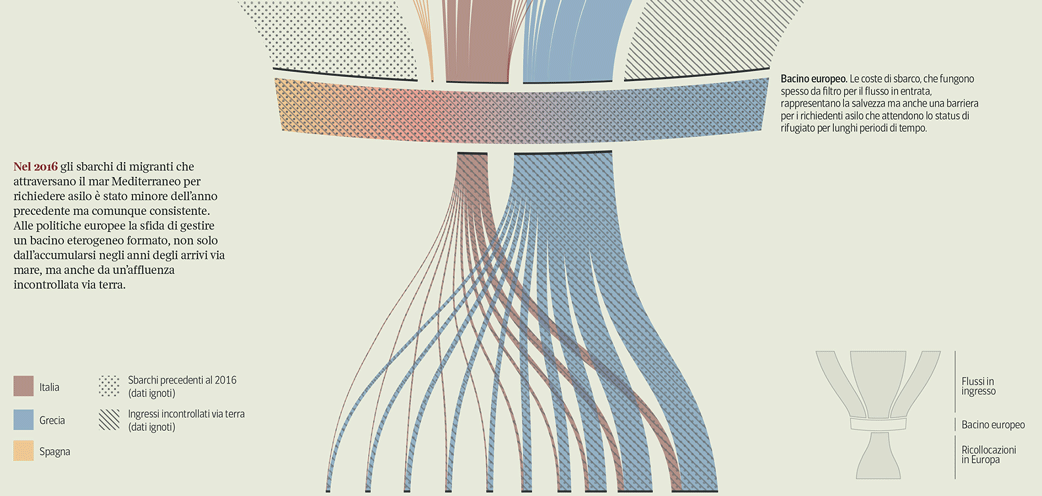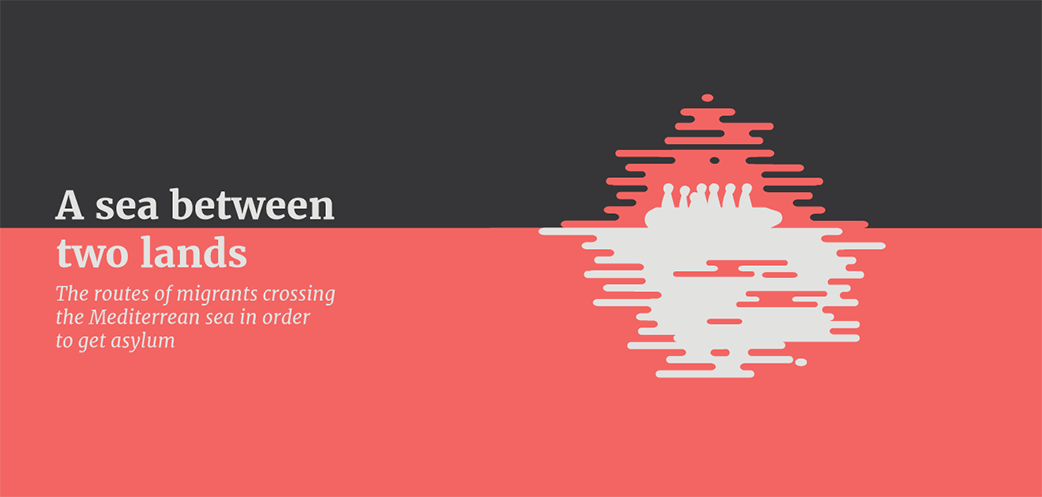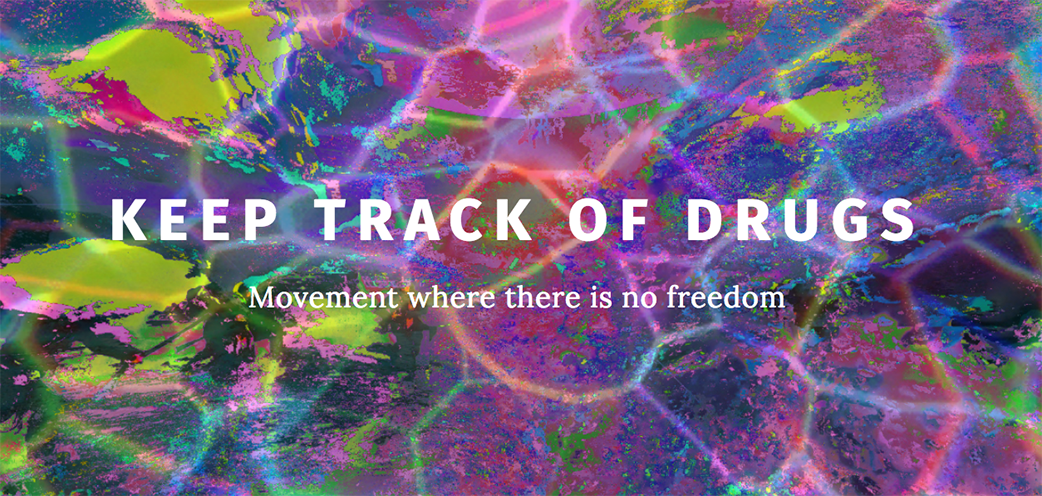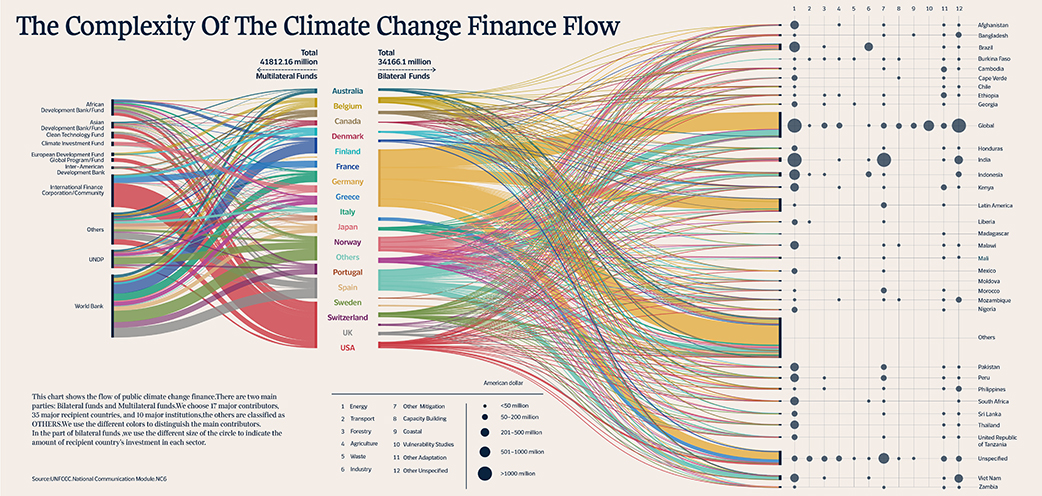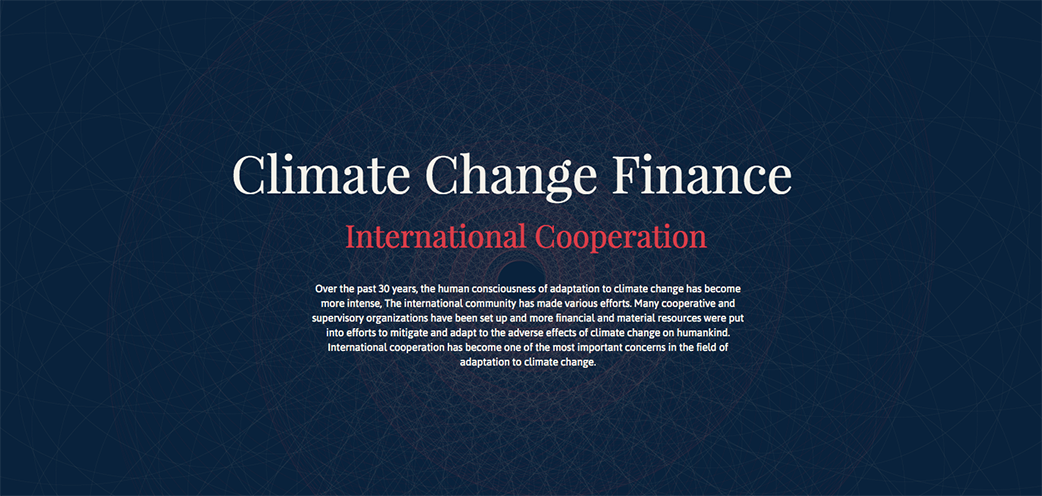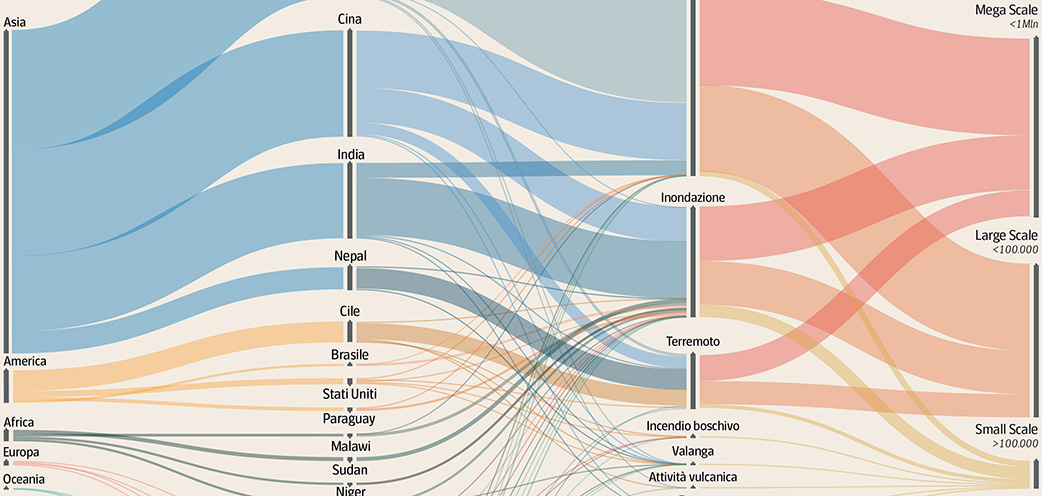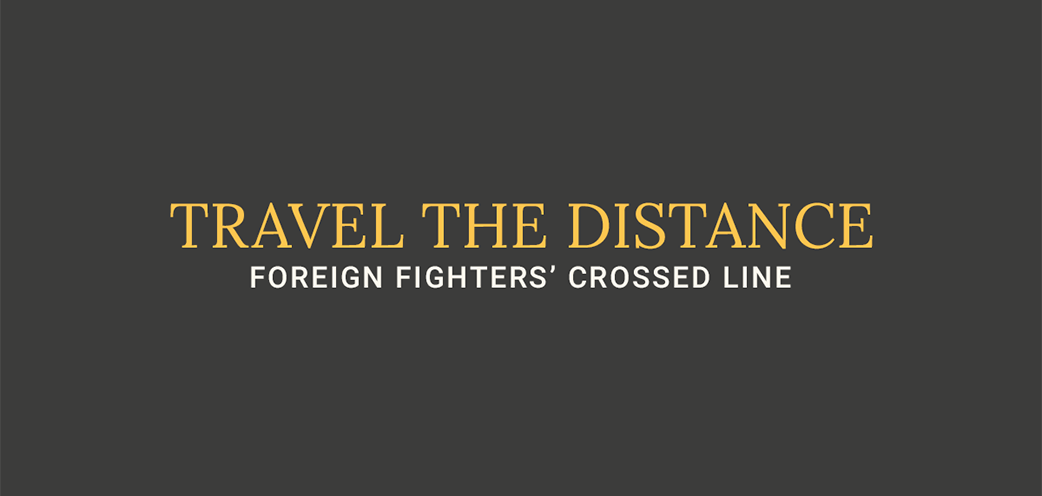Exploring
official data
Integrated Course
Final Synthesis Studio
2016-2017

In the 2016/2017 edition of the Final Synthesis Studio we asked the students to use information visualization both as an analytical and a communicative tool, to observe, understand, shape and communicate complex phenomena. In the first part of the course, the students had to find and collect data from official sources relevant to their topic (open data from governments, scientific papers, etc…) so they could get a first grasp of the depth and complexity of these issues. The result is a series of visualizations that represented a general overview of the topic, seen with the eyes of the “official” sources.
Full list of the projects:
Climate change
Migration
Free movement
Radicalization
Free movement
Climate change
Migration
Radicalization
The point of no return
Climate change is an increasingly significant phenomenon and it’s likely to become something irreversible. In this website, we analyzed how the international community is acting to mitigate the human component on this phenomenon and to help various countries hit by the effects of climate change adapt in the best way possible. We follow the history of international meetings, and we analyze the vulnerability to the effects of climate change, and how ready the world’s countries are. On the other hand, in the visualization is shown how the funds are allocated for climate change adaptation since 2002, in the framework of international programs. The data are linked to vulnerability and readiness of the receiving Countries.
Valeria Aufiero, Andrea Benedetti, Alessia Bissolotti, Simone Costagliola, Beatrice Gobbo
A sea between two lands
Migration is an hard challenge for Europe, but a complex phenomenon needs different points of view. Looking it from the perspective of migrants can be helpful to highlight the different facets that characterizes it. While in the infographic is possible to see how it is difficult for Europe to manage the inflow, the website shows the obstacles and dangers faced by migrants. These double view wants to provide a complete and deeper description of this phenomenon.
Vincenzo Bisceglia, Valeria Brienza, Nicola Creioli, Matteo Tartaglia
Open culture in Europe
How open is the so called “Open culture” in Europe? The project provides an overview on Creative Commons licenses usage in Europe, focusing on the specific case of the art collector “Europeana”. This database aims at enabling people to use and explore the european cultural heritage which is therefore released under more or less restrictive common licenses. The visualizations shows how artworks are clustered and distributed depending on the licenses applied, on the more contributing countries and museums, and finally on their typology. These parameters have been cross-checked to spot some interesting correlations occurring in the Open Culture phenomenon.
Nicolò Fabio Banfi, Erika Inzitari, Ludovico Pincini, Andrey Vinogradov
It’s not so Isis
Terrorism is the consequence of some groups’ activities originated from the violent radicalization of different mindsets. It is a complex phenomenon, but there are three core sources that could be identified as triggers of a plurality of ideologies: political, ethnical and religious. Despite the latter has grown exponentially in recent years, all are part of a dangerous phenomenon that always involves several points of view: besides the groups also the affected places and, especially, the victims. This project examines the phenomenon from all these points of view, trying to answer this question: is all so simple as it seems?
Francesco Cosmai, Giacomo Flaim, Francesco Giudice, Barbara Nardella, Giulia Zerbini
Keep track of drugs
The free movement of goods is one of the four principles at the foundations of the European Union. Therefore in Europe there’s a single internal market in which all goods, capitals and services can move freely without restrictions. What does happen to illegal goods, such as drugs? Does all governments within the EU treat psychoactive drugs the same way? This research has its core in the analysis of the different situations in Europe up to 2005 and it’s mainly focused on comparing the different laws. Our dataset is provided by the EMCDDA, the European Monitoring Centre for Drugs based in Lisbon and born in 1995. The outcome is an overview of the estimated use of drugs, the main traffic routes and seizures and a map of the legislative approaches for each country. The are great differences within the EU even though it’s observed that the most recent laws goes towards the decriminalization of soft drugs.
Sofia Chiarini, Giulia Corona, Alessandra Del Nero
Climate change finance
Climate change is the biggest problem we have ever had to face, as communities, countries and planet. Finance is always a hot topic under the climate change circumstances. Because it is an expensive problem given that adjusting economies to limit greenhouse gas emission costs enormous amount of money. Due to the unevenly distributed adaptive capacity, the public resources are mainly transferred from developed to developing countries. That’s why there are two divisions in the current climate finance network, the contributors and the recipients. In order to ensure that climate finance gets to where it is needed. It’s important to monitor and track flows of international climate finance. Our project objective is to analyze the complexity of the climate finance and the current situation.
Gao He, Ling SiYang, Cheng YuXiao, Tian Long, Zhang Long
Environmental migration
Over the years, the intensity of the natural disasters increased dramatically, creating millions of migrants worldwide. Our project aims to realize an overview of the internal disaster-induced displacements from 2008 to 2015 with a particular focus on the last three years. We go to explore the typologies of disasters, their growth curve and their impact on migration.
Sara Batisti, Alicia Gonzalez, Emanuele Innocenti, Mattia Virtuani
Travel the distance
The research for faith and meaning is for foreign fighters a research for god. One god who materializes in the battle against infidels and aimed to the creation of the Islamic State. Starting from the data about the movements of the fighters from their home countries to the combat fields, the project studies the role of social, religious and economic indexes that might influence the reality of each individual and that could be crucial in driving the need to look for equilibrium elsewhere missing.
Serena Del Nero, Marco Mezzadra, Claudia Pazzaglia, Alessandro Riva, Alessandro Zotta


